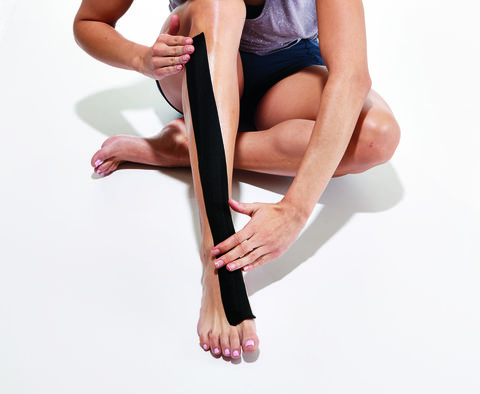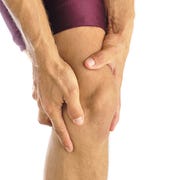Your Guide to Using Kinesiology Tape for Shin Splints
Don’t let shin splints sideline you. Here’s how KT tape can offer support.

It’s a known fact among runners: Shin splints suck. Less known? Kinesiology tape a.k.a. KT tape can make shin splints suck a little less. According to a study of people with shin splints published in The Journal of Sports Medicine and Physical Fitness, from 2018, those who wore kinesio tape for just a week experienced less pain and showed improvement in functional activity, compared to those who used shoe insoles. That’s some good news when—as the study also points out—shin splints make up approximately 13 percent of all running-related injuries.
“Shin splints happen when you overload the muscles in the front of your shin, causing inflammation in the muscle, tendon, and bone,” says Cameron Yuen, senior physical therapist at Bespoke Treatments in New York City. “Kinesio tape lifts the superficial tissues—which promotes healing by moving waste products out of the area—and stimulates nerve endings that relax the muscle.”
The elastic nature of the KT tape also allows for normal movement patterns, so you can still log some of the miles on your training plan. Yuen recommends taping the area per the how-to here (he uses RockTape). He does advise to cut your mileage in half for the next two weeks. “Shin splints are often caused by going too hard or too far without building up to it,” he says. If you feel better, increase your mileage by 10 percent each week; if you’re still hurting, see a doc to rule out a stress fracture. Says Yuen, “Shin splints respond well to rest, so something else is going on if you still feel pain.”
Here’s how to properly tape up your shin with KT tape. Keep in mind, it’s always smart to see a professional for taping or to assess any injuries or aches and pains you might be feeling regularly on the run.
Watch Next


6 Exercises to Prevent Shin Splints

How to Treat Shin Splints

Everything You Need to Know About Shin Splints

How to Use Kinesio Tape to Deal With Injuries






